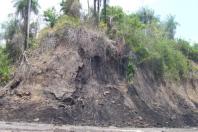Estonia starts to shelve oil shale
Estonia starts to shelve shale
Greenfudge.org
On the 28th of February authorities began the dismantling of the above-ground buildings at the Viru mines facility. Located in Ida-Viru County in the north-east of Estonia, the mines had been active for 48 years before their closure last June. The complicated project is forecast to create over 50,000 tons of building waste, making it one of the biggest of its kind in the country. Hopefully it will prove to be one step in a broader change in the country’s energy generation and consumption.
In 2012, 70% of Estonia’s total primary energy supply came from oil shale, with 80% of that going towards electricity production. In total the country is home to 17% of Europe’s total shale reserve. Put simply, oil shale has been pivotal to Estonia, the core of its energy producing independence and a driving force of its economy.
Unfortunately, it is also terrible for the environment. The oil shale from Estonia, whether burnt directly or processed into shale oil, emits more carbon dioxide than any other fossil fuel. The extraction process for oil shale has also taken its toll on the environment. In 2011 Kaisa Kivila, the then Chief Specialist of the Water Department of the Ministry of the Environment said:
Due to long term mining of oil shale, the ground water problems in Ida-Viru County are the worst in Estonia.
The groundwater in the area had to be constantly monitored to check for pollutants from the mines. The problems then continued once the mines started to close, as the movement and levels of underground water began to change.
Clearly it is unsustainable, but reducing the use of oil shale in Estonia is a delicate balancing act, especially when placed alongside the country’s drive to halve its carbon dioxide emissions by 2020. On the one hand there is a push towards sustainability, on the other a need to maintain energy security. The National Development Plan for Oil Shale Use for 2008-15 aims to achieve this challenging feat.
The idea is to improve the efficiency of oil shale from extraction onwards. A huge investment in research has been made since 2011. By getting more from less it is hoped that new technologies will reduce the amount of shale that needs to be mined for each unit of energy. In addition is a huge investment in renewable sources. In 2012 Estonia derived a respectable 14.6% of its power from sources such as biomass. Under the European Renewable Energy Directive it is aiming for 25%. These two factors combined will surely lead to a reduction in the environmental impact of oil shale.
Estonia has relied on oil shale for power for nearly a century. It has been a dirty necessity for the country’s survival and independence, but one that has come with a heavy environmental cost. By investing in improving the efficiency of shale while researching renewable alternatives, Estonia has shown it is possible to take strides towards reducing consumption of dangerous fuels and hopefully build a more sustainable future without compromising economic growth.
http://www.greenfudge.org/2014/03/12/estonia-starts-to-shelve-shale/


